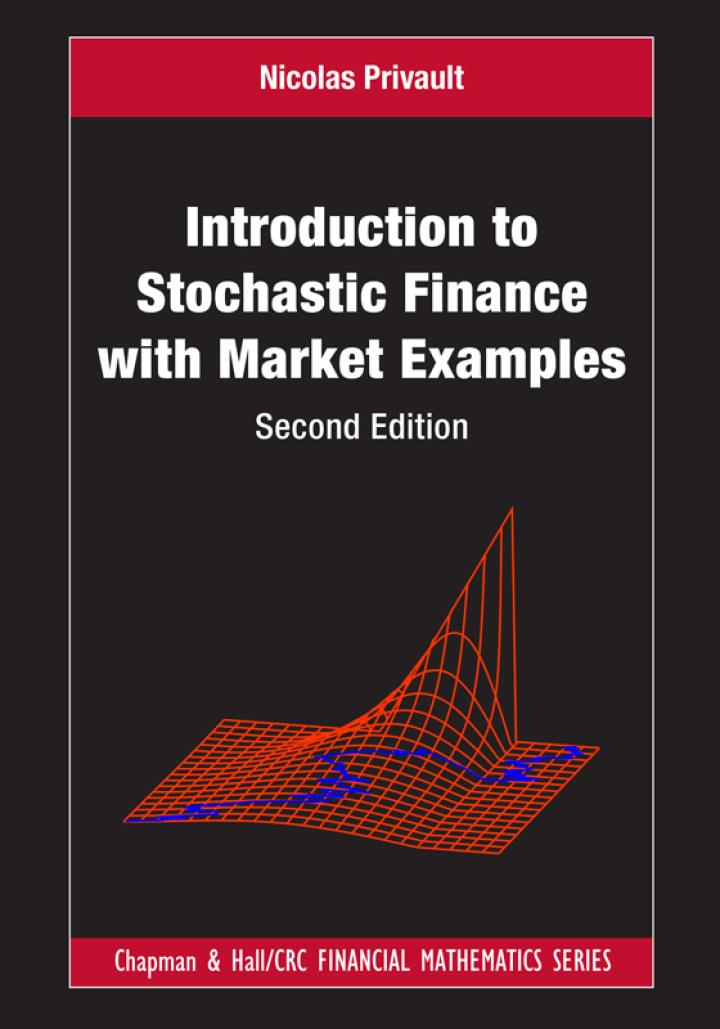a) Consider the stochastic differential equation [ begin{equation*} d S_{t}=r S_{t} d t+sigma S_{t} d B_{t}, quad
Question:
a) Consider the stochastic differential equation
\[
\begin{equation*}
d S_{t}=r S_{t} d t+\sigma S_{t} d B_{t}, \quad t \geqslant 0 \tag{5.23}
\end{equation*}
\]
where \(r, \sigma \in \mathbb{R}\) are constants and \(\left(B_{t}ight)_{t \in \mathbb{R}_{+}}\)is a standard Brownian motion. Compute \(d \log S_{t}\) using the Itô formula.
b) Solve the ordinary differential equation \(d f(t)=c f(t) d t\) and the stochastic differential equation (5.23).
c) Compute the lognormal mean and variance
\[
\mathbb{E}\left[S_{t}ight]=S_{0} \mathrm{e}^{r t} \quad \text { and } \quad \operatorname{Var}\left[S_{t}ight]=S_{0}^{2} \mathrm{e}^{2 r t}\left(\mathrm{e}^{\sigma^{2} t}-1ight), \quad t \geqslant 0,
\]
using the Gaussian moment generating function (MGF) formula.
d) Recover the lognormal mean and variance of Question (c) by deriving differential equations for the functions \(u(t):=\mathbb{E}\left[S_{t}ight]\) and \(v(t):=\mathbb{E}\left[S_{t}^{2}ight], t \geqslant 0\), using stochastic calculus.
Step by Step Answer:

Introduction To Stochastic Finance With Market Examples
ISBN: 9781032288277
2nd Edition
Authors: Nicolas Privault





